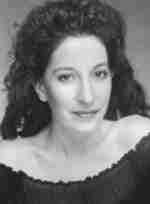|
|
|
|
Recording Review On the Right Trackby Leonard Lehrman ©2006 ‘SONGS IN TRANSIT: AN AMERICAN EXPEDITION,’ 19 songs by eight composers. Melanie Mitrano , soprano ©2006. Capstone CPS-8756 - Time: 55:03
Mitrano sings her own settings of two of her own texts and one of E.E. Cummings; Beth Anderson's of her own and H.W. Auden's texts; and Allen Jaffe's of Deborah Atherton's text, all accompanied by Judith Munro de Wette. Composers accompany her in their own works: Tom Cipullo's four settings of Marilyn Kallet, Lori Laitman's of Sara Teasdale and Dana Gioia, Lee Hoiby's three of Elizabeth Bishop, Paul Moravec's of Wendy Lamb and his wife Martha, and David Del Tredici's of Carla Drysdale. Also included is Gene Pritsker's “Perirrhanterium” on a text by George Herbert. This is a deliberately provocative album by an extremely talented performer who has brought out the best in all the composer/ pianists who have been fortunate enough to work with her. The provocation is more in the attitude, exemplified by the cover photo in which the soprano is sitting on a railroad track, seeming! ly daring a train to come run her over. The musical styles are for the most part neo-classical, and quite attractive, the one exception being the Pritsker, which dispenses with the piano in favor of a metallic track that sounds completely out of place here. Cipullo gets to chime in vocally-quite humorously and effectively-in “The Pocketbook,” the third song in his delightful four-song cycle, How to Get Heat Without Fire. Lori Laitman's setting of Dana Gioia's “Money” is one of her best. Lee Hoiby is to be thanked not only for his sensitively romantic text-setting and playing, but also for arranging for the patronage of Claudine Osterrieth , who funded the printing of all the texts (99% of which are excellently articulated) in this well-produced album (though there might have been a few more seconds' pause between works by different composers). Moravec's Two Popular Songs, especially “Main Street U.S.A. ,” are the catchiest (somewhere between Ives and Sondheim); Del Tredici's “New Year's Eve” is the pianistically showiest - in fact it's practically a piano concerto with voice: Sinding meets Rachmaninoff interwoven with “Auld Lang Syne.” Mitrano's own works are enhanced by her most seductive singing, as she obv ! iously enjoys the opportunity to display both musical and dramatic range therein. No danger here of her “being swallowed up by a piano.” Her charisma comes through clearly, even without what must be a compelling physical presence. I would dispute her assertion that a singer must never use music in a performance; but if she ever decides she'd like to memorize and sing any of my songs, I'd certainly have no objection. |

